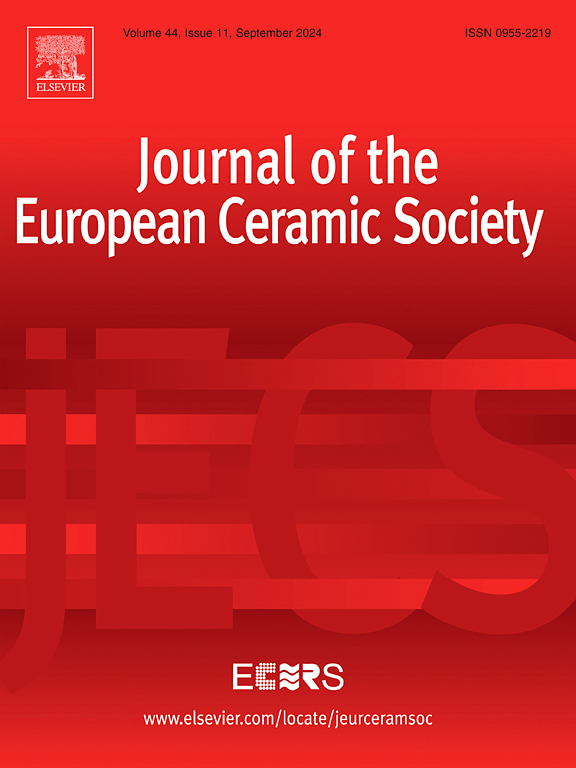Investigation of Zn2+-Mn3+ co-substituted Z-type hexaferrite for patch antenna application
IF 5.8
2区 材料科学
Q1 MATERIALS SCIENCE, CERAMICS
Journal of The European Ceramic Society
Pub Date : 2025-04-17
DOI:10.1016/j.jeurceramsoc.2025.117468
引用次数: 0
Abstract
As a substrate material for microstrip patch antennas, enhancing the high-frequency magneto-dielectric properties of ferrite is a crucial research challenge. Herein, a series of Zn2+-Mn3+ co-substituted Ba1.5Sr1.5Co2-xZnxMnyFe23-yO41-δ hexaferrites is reported. The phase composition, crystal structure, microstructure, ion valence and magneto-dielectric properties of the samples are systematically investigated. The study reveals that the hexaferrite with x = y = 0.4 has superior magneto-dielectric properties due to its single phase, highly compact, enhanced permeability and dielectric constant, and low magnetic and dielectric losses. Meanwhile, its miniaturization factor (n) exceeds 17 while the normalization constant approaches 1, representing the excellent high-frequency magneto-dielectric properties. Finally, a rectangular microstrip patch antenna is designed and simulated using the optimized hexaferrite. It demonstrates an operational frequency of 0.8 GHz, small size, and excellent radiation performance with = -19.43 dB, BW = 346 MHz, and VSWR = 1.86.
贴片天线用Zn2+-Mn3+共取代z型六铁氧体的研究
作为微带贴片天线的衬底材料,提高铁氧体的高频磁介电性能是一个重要的研究课题。本文报道了一系列Zn2+-Mn3+共取代Ba1.5Sr1.5Co2-xZnxMnyFe23-yO41-δ六铁素体。系统地研究了样品的相组成、晶体结构、微观结构、离子价态和磁介电性能。研究表明,x = y = 0.4的六铁氧体具有单相、高致密性、高磁导率和介电常数、低磁损耗和介电损耗等优越的磁介电性能。同时,其小型化系数(n)超过17,归一化常数接近1,表现出优异的高频磁介电性能。最后,利用优化后的六铁氧体设计并仿真了矩形微带贴片天线。工作频率为0.8 GHz,体积小,辐射性能优良,S11 = -19.43 dB, BW = 346 MHz, VSWR = 1.86。
本文章由计算机程序翻译,如有差异,请以英文原文为准。
求助全文
约1分钟内获得全文
求助全文
来源期刊

Journal of The European Ceramic Society
工程技术-材料科学:硅酸盐
CiteScore
10.70
自引率
12.30%
发文量
863
审稿时长
35 days
期刊介绍:
The Journal of the European Ceramic Society publishes the results of original research and reviews relating to ceramic materials. Papers of either an experimental or theoretical character will be welcomed on a fully international basis. The emphasis is on novel generic science concerning the relationships between processing, microstructure and properties of polycrystalline ceramics consolidated at high temperature. Papers may relate to any of the conventional categories of ceramic: structural, functional, traditional or composite. The central objective is to sustain a high standard of research quality by means of appropriate reviewing procedures.
 求助内容:
求助内容: 应助结果提醒方式:
应助结果提醒方式:


